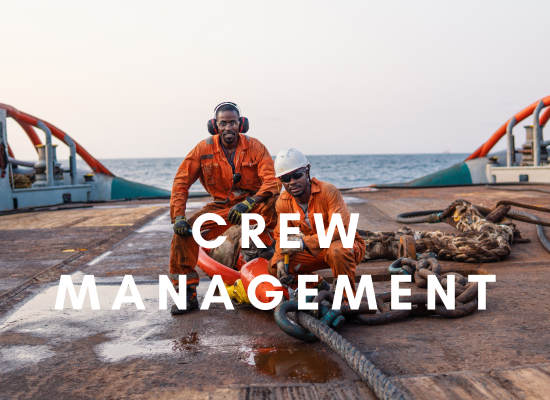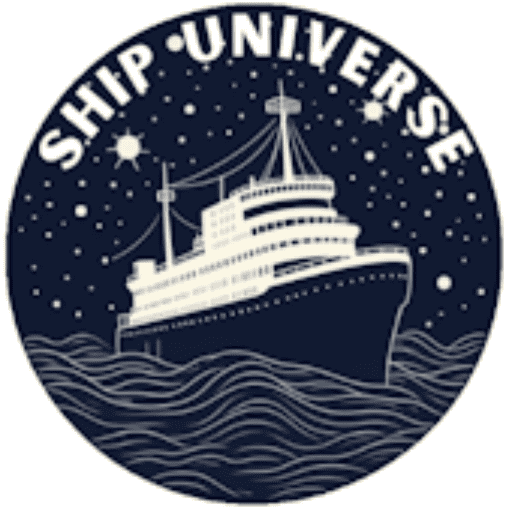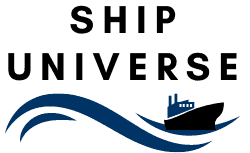20 Cost Effective Tips for Effective Crew Management on Ships

The complexities of life at sea demand a robust framework for crew management that prioritizes safety, efficiency, and morale. From ensuring comprehensive training and maintaining open communication channels to fostering a supportive and healthy onboard environment, the way a crew is managed can significantly influence the overall operational success of a vessel. Here we explore twenty essential and cost effective tips that ship operators and captains can implement to optimize crew performance and create a positive working environment aboard ships.
* Please send feedback/suggestions to editor @ shipuniverse.com
1. Comprehensive Training Programs
Overview: Ensuring that all crew members are up-to-date with the latest safety protocols, technological advancements, and operational procedures is crucial for efficiency and safety on board.
Cost: Moderate; costs include training materials and potentially external trainers.
Ease of Implementation: Medium; requires coordination for onboarding sessions and ongoing training schedules.
2. Clear Communication Channels
Overview: Establishing open and effective communication among crew members and between the crew and shore-based management is essential for operational success and safety.
Cost: Low to moderate; costs might include communication tools and systems.
Ease of Implementation: High; involves setting up structured communication protocols and regular meetings.
3. Regular Safety Drills
Overview: Frequent safety drills help ensure that all crew members know their roles in emergency situations, improving response times and reducing the likelihood of accidents.
Cost: Low; primarily involves time spent in planning and executing drills.
Ease of Implementation: Medium; requires regular scheduling and commitment from all crew members.
4. Mental Health Support
Overview: Providing access to mental health resources, including counseling services and wellness programs, to support the psychological well-being of the crew.
Cost: Moderate; costs can include hiring professionals and setting up support systems.
Ease of Implementation: Medium; depends on the availability of resources and the establishment of a confidential and supportive environment.
5. Performance Incentives
Overview: Implementing a system of incentives for outstanding performance can motivate crew members and enhance productivity and morale onboard.
Cost: Variable; can be designed to match the ship operator’s budget constraints.
Ease of Implementation: Medium; requires defining clear performance criteria and maintaining transparent assessment processes.
6. Advanced Safety Equipment
Overview: Equipping ships with the latest safety equipment, including personal protective gear and advanced navigation aids, ensures crew safety and compliance with international maritime safety standards.
Cost: Moderate to high; investment depends on the level of technology and equipment quality.
Ease of Implementation: Medium; involves procurement and training for proper equipment use.
7. Flexible Work Schedules
Overview: Implementing flexible work schedules to accommodate the needs and well-being of the crew, helping to reduce fatigue and improve overall job satisfaction.
Cost: Low; primarily requires administrative adjustments.
Ease of Implementation: Medium; needs careful planning to ensure all operational roles are covered without compromising ship functions.
8. Cultural Sensitivity Training
Overview: With crews often composed of members from diverse cultural backgrounds, training in cultural sensitivity can enhance interpersonal relations and teamwork on board.
Cost: Low to moderate; may involve hiring diversity and inclusion trainers.
Ease of Implementation: High; such training can be integrated into regular training sessions and does not require technical changes.
9. Robust Onboarding Processes
Overview: A thorough onboarding process for new crew members ensures that they understand their roles, responsibilities, and the ship’s operations, leading to better integration and performance.
Cost: Low; involves time and resources for developing and conducting onboarding sessions.
Ease of Implementation: High; onboarding is a standard HR function that can be systematized with checklists and training modules.
10. Regular Health Check-Ups
Overview: Providing regular health check-ups onboard helps monitor the crew’s physical health, preventing illnesses and ensuring that all crew members are fit for duty.
Cost: Moderate; involves medical staff and potentially medical equipment on board.
Ease of Implementation: Medium; requires organizing schedules and ensuring confidentiality and proper follow-up care.
11. Conflict Resolution Training
Overview: Training crew members in conflict resolution techniques can help prevent disputes from escalating and maintain a harmonious working environment on board.
Cost: Low to moderate; may include hiring a specialist trainer.
Ease of Implementation: High; can be incorporated into regular training sessions and requires ongoing practice and reinforcement.
12. Ergonomic Work Environments
Overview: Designing workspaces with ergonomics in mind can help prevent strain and injury, improving crew comfort and productivity during long voyages.
Cost: Moderate; involves investing in ergonomic furniture and equipment.
Ease of Implementation: Medium; requires a one-time setup and occasional adjustments based on feedback.
13. Recreational Facilities
Overview: Providing recreational facilities or activities helps improve the mental and physical health of the crew, reducing stress and boosting morale during long periods at sea.
Cost: Variable; depends on the type of facilities provided (e.g., gym equipment, entertainment systems).
Ease of Implementation: Medium; space and weight considerations on the ship need to be managed.
14. Continuous Professional Development
Overview: Offering opportunities for continuous professional development, including certification courses and advancement training, can increase crew loyalty and retention.
Cost: Moderate; involves course fees and time allocated for training.
Ease of Implementation: High; many training programs are available online, making them accessible even while at sea.
15. Effective Resource Management
Overview: Efficient management of onboard resources, including water, food, and energy, not only reduces operational costs but also teaches responsibility and sustainability practices to the crew.
Cost: Low; primarily requires training and procedural adjustments.
Ease of Implementation: High; involves implementing monitoring systems and educating the crew on conservation practices.
16. Comprehensive Insurance Coverage
Overview: Ensuring that all crew members have comprehensive health and accident insurance coverage provides peace of mind and protects against unforeseen costs arising from injuries or illnesses.
Cost: Moderate; depends on the coverage extent and the number of crew members.
Ease of Implementation: High; involves selecting a suitable insurance provider and integrating the cost into the overall employment package.
17. Enhanced Communication with Shore
Overview: Maintaining strong communication lines with shore-based management ensures that crew members feel supported and that any issues can be quickly addressed.
Cost: Low; mainly requires the use of existing communication technologies.
Ease of Implementation: High; involves regular check-ins and updates, facilitated by digital communication tools.
18. Privacy and Personal Space
Overview: Respecting the privacy and personal space of each crew member, especially in the confined environment of a ship, is crucial for maintaining morale and mental well-being.
Cost: Low; involves thoughtful design and scheduling.
Ease of Implementation: Medium; depends on the ship’s physical layout and the ability to provide private quarters or designated private times.
19. Nutritious Meal Planning
Overview: Providing nutritious, varied, and culturally appropriate meals helps maintain physical health and boosts crew morale.
Cost: Moderate; involves careful menu planning and possibly higher quality food supplies.
Ease of Implementation: High; requires collaboration with experienced catering staff to design meals that are both healthful and satisfying.
20. Feedback and Continuous Improvement
Overview: Establishing a system for feedback where crew members can voice concerns and suggest improvements helps identify areas for enhancement and promotes a culture of continuous improvement.
Cost: Low; mainly requires administrative time to collect and analyze feedback.
Ease of Implementation: High; involves regular surveys, suggestion boxes, and feedback meetings, all of which can be seamlessly integrated into crew management practices.
Implementing these twenty strategies for effective crew management not only enhances the operational capabilities of maritime vessels but also improves the well-being of those who keep these vessels running. Effective crew management is a dynamic and ongoing process that requires commitment, innovation, and a deep understanding of human resources. By embracing these best practices, ship operators can ensure their crews are well-prepared, well-supported, and motivated, ultimately leading to safer, more efficient voyages and a positive work atmosphere at sea.

Do you have any feedback or additional insights? Please reach out to editor @ shipuniverse.com


